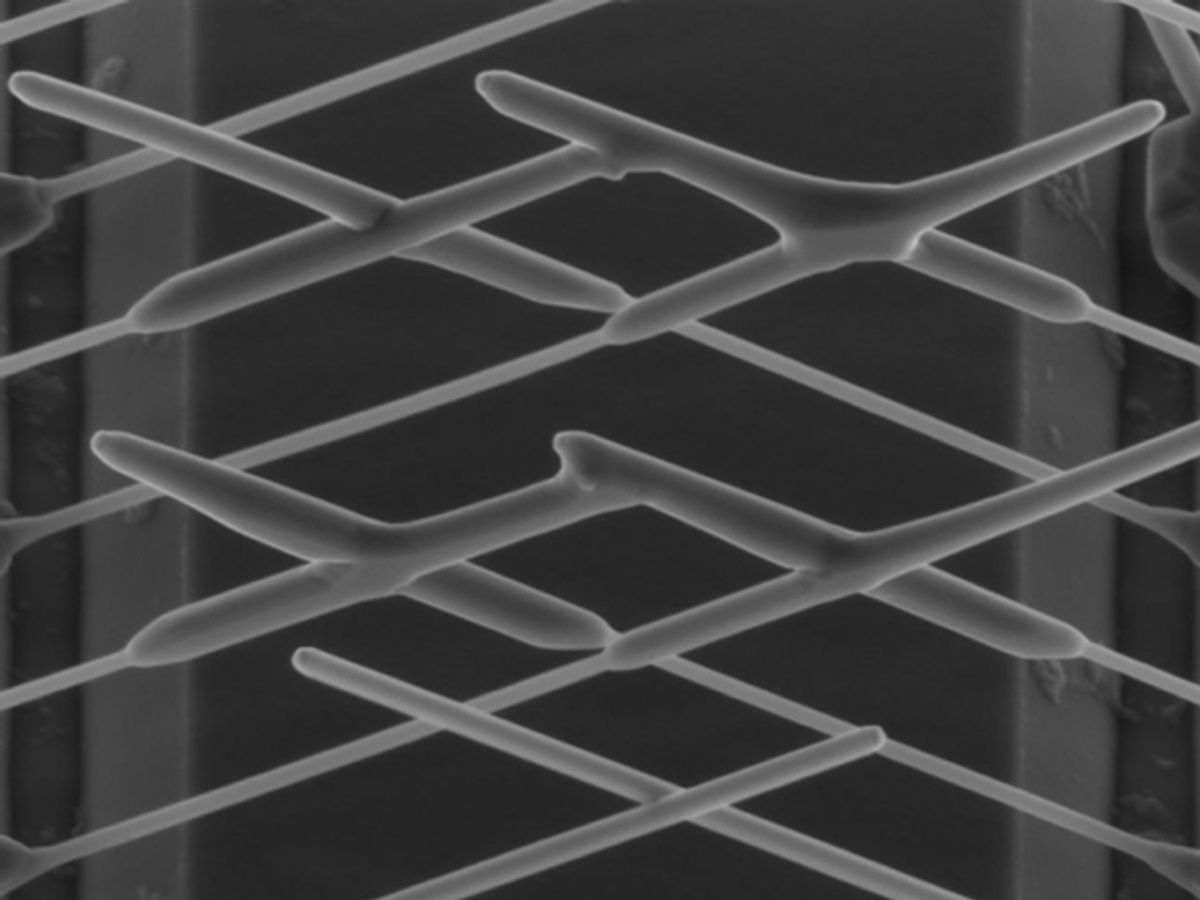An international team of researchers has fashioned a device from nanowires that may finally prove the existence of long-theorized quasiparticles known as Majorana particles. Once these Majorana particles are identified and isolated, they could form the basis of a quantum bit—or qubit—that would process information in a new kind of quantum computer with improved stability.
Ever since 1937, when the Italian physicist Ettore Majorana first theorized the existence of the quasiparticle that takes his name, there has been much effort to prove that it really exists, with little to show for it. But this changed back in 2012, when researchers at Delft University of Technology (TU Delft) in the Netherlands saw strong hints of Majoranas when they sent electrons into a semiconducting nanowire placed alongside superconducting material.
Since that 2012 Delft research, there have been a number of experiments that have reported evidence of Majoranas in a similar system. However, all of those experiments, including the original one at Delft, left open the possibility of alternative explanations for the results. So, unil now, there has been no “smoking-gun” evidence of Majoranas, said Hao Zhang, a post-doc at TU Delft, in an e-mail interview with IEEE Spectrum.
There remained one definitive way to prove the existence of these Majorana particles and that was for them to exchange places along the nanowire, a phenomenon referred to as exchanging statistics of the particles. These statistics describe how the quantum mechanics of the system change when two indistinguishable particles switch places.
This exchange of places along the nanowire is also called “braiding”. These braids form the logic gates of topological quantum computers. However, no one could see how this braiding was possible because the act of getting the particles to pass each other in this nanowire would annihilate them.
If this braiding of these quasiparticles could somehow be artificially induced, researchers theorized, it would result in a far more stable method for quantum computing than employing trapped quantum particles. That’s because the system wouldn’t be susceptible to outside influences like thermal fluctuations.
In research described in the journal Nature, the researchers, from TU Delft, Eindhoven University of Technology in the Netherlands, and the University of California, Santa Barbara, created a hashtag-like device made from nanowires. It provided a four-way intersection in which two Majorana particles could exchange places in the nanowire-based structure without coming in contact with each other and annihilating each other.
“These braiding experiments can give experimental results, which are unique to Majoranas, and cannot be mimicked by other alternative scenarios,” says Zhang. “Thus it can be treated as the smoking-gun evidence.”
Braiding not only provides definitive evidence of Majoranas, but perhaps more importantly, it also proves the feasibility of topological quantum computing in which the fundamental assumption of their operation is based on the braiding phenomenon. In other words, the braiding not only proves the existence of Majoranas, but also provides the mechanism by which they could serve as the basis of a qubit for a topological quantum computer.
This means that the quantum information (qubit) can be stored and manipulated simply by braiding (swapping) of Majoranas. “This process of braiding is supposed to be robust against error since the outcome only depends on the order of braiding operations,” adds Zhang.
In the video below, you can see a description of how the Majoranas are formed from the combining of semiconductor nanowires with a superconductor material, and how once formed can be manipulated into serving as qubits in a topological quantum computer.
This robustness against error depends on Majorna’s ability to maintain superposition. In previous quantum computing proposals, the unpaired electrons of certain ions can assume either of two spin states, up or down—or in terms of digital logic, 0 or 1. When these ions are hit with a microwave pulse, the unpaired electron can take on both the 0 and 1 state simultaneously. These two states constitute what is termed superposition.
Until now, it has only been possible to maintain a superposition state for very short periods of time because the spin states of neighboring atoms quickly destroy the coherent state. This makes the life of the qubit too short for it to perform the desired number of quantum computations.
“This is the biggest advantage of Majorana qubit compared to other qubits,” says Zhang. “The Majorana qubit should have longer coherence time (robust against error) due to its topological protection.”
Zhang says that they are already working on the engineering of a qubit based on these Majoranas that will involve the fabrication of a microwave pulse circuit.
Dexter Johnson is a contributing editor at IEEE Spectrum, with a focus on nanotechnology.



